The electric vehicle market is rapidly evolving, and two contenders making significant waves are the Kia EV3 and the Tesla Model Y. Both models are SUVs with impressive specifications, innovative technology, and appealing design. This article compares these two electric vehicles to help potential buyers make an informed decision.
Kia EV3 vs Tesla Model Y – Differences & prices compared
Everyday use, family trips or long-distance drives – here’s where the differences show.
Discover whether Kia EV3 or Tesla Model Y fits your lifestyle better.
Power and Performance
The Kia EV3 offers a robust power output with a maximum of 204 HP and a torque of 283 Nm, delivering a commendable acceleration of 0-100 km/h in approximately 7.5 to 7.9 seconds. It is available in both 58.3 kWh and 81.4 kWh battery configurations, providing an electric range of up to 605 km, which is particularly impressive for daily commutes and long trips alike.
On the other hand, the Tesla Model Y presents a range of power configurations, starting from 299 HP to an exhilarating 534 HP in high-performance versions. The torque can go up to a staggering 660 Nm, allowing it to reach 0-100 km/h in as little as 3.7 seconds. With a various battery capacity setups (62 kWh to 79 kWh), the electric range can achieve up to 600 km, depending on the configuration.
Efficiency and Consumption
When considering energy consumption, the Kia EV3 shines with a rated consumption of 14.9 to 16.2 kWh/100 km, which places it among the more efficient models available on the market. The Model Y, however, has a slightly higher consumption rate ranging from 14.9 to 17.3 kWh/100 km, varying with the specific drivetrain configurations.
Interior and Comfort
Both vehicles can comfortably seat five passengers, with the option for the Tesla Model Y to accommodate up to seven with its third-row seating. The trunk capacity greatly favors the Tesla Model Y, which offers between 363 liters (for the base model) up to 854 liters, compared to the Kia EV3’s fixed 460 liters. This additional cargo space enhances the Model Y's practicality for families and long journeys.
Technology and Innovations
Both manufacturers incorporate cutting-edge technology in their vehicles. The Kia EV3 comes equipped with advanced driver-assistance features, including lane-keeping assistance and adaptive cruise control, wrapped in a user-friendly infotainment system. The use of materials to ensure sustainability is prominent in the cabin design, highlighting Kia's commitment to eco-friendliness.
The Tesla Model Y, however, goes a step further with its renowned Autopilot system, semi-autonomous driving capabilities, and a massive touchscreen interface that controls most of the vehicle functions. Tesla’s over-the-air software updates keep the Model Y up-to-date with the latest features and advancements in automotive technology.
Design and Aesthetics
In terms of design, the Kia EV3 showcases a modern and bold aesthetic typical of Kia's recent offerings, featuring a sleek silhouette and distinctive front fascia. Inside, the EV3’s cabin is spacious and refined, with an emphasis on high-quality materials and a contemporary layout.
The Tesla Model Y follows the brand's minimalist design philosophy, featuring clean lines and a focus on functionality. The cabin spaces are spacious and utilitarian, emphasizing a seamless experience with a high-tech feel.
Conclusion: Which to Choose?
Choosing between the Kia EV3 and the Tesla Model Y largely depends on individual needs and preferences. If energy efficiency, practicality, and a competitive price point are your primary considerations, the Kia EV3 is a solid choice. Alternatively, if you prioritize performance, advanced technology, and brand prestige, the Tesla Model Y may be the more compelling option.
As the electric vehicle segment continues to grow, both Kia and Tesla are setting standards that will undoubtedly shape the future of driving. Potential buyers should carefully assess their priorities to determine which vehicle best fits their lifestyle.
Here’s where it gets real: The technical differences in detail
Costs and Efficiency:
Price and efficiency are often the first things buyers look at. Here it becomes clear which model has the long-term edge – whether at the pump, the plug, or in purchase price.
Kia EV3 has a slightly advantage in terms of price – it starts at 30800 £, while the Tesla Model Y costs 34300 £. That’s a price difference of around 3429 £.
In terms of energy consumption, the advantage goes to the Tesla Model Y: with 13.10 kWh per 100 km, it’s a bit more efficient than the Kia EV3 with 14.90 kWh. That’s a difference of about 1.80 kWh.
As for range, the Tesla Model Y performs slight better – achieving up to 622 km, about 17 km more than the Kia EV3.
Engine and Performance:
Power, torque and acceleration are the classic benchmarks for car enthusiasts – and here, some clear differences start to show.
When it comes to engine power, the Tesla Model Y has a significantly edge – offering 627 HP compared to 204 HP. That’s roughly 423 HP more horsepower.
In acceleration from 0 to 100 km/h, the Tesla Model Y is convincingly quicker – completing the sprint in 3.50 s, while the Kia EV3 takes 7.50 s. That’s about 4 s faster.
In terms of top speed, the Tesla Model Y performs distinct better – reaching 250 km/h, while the Kia EV3 tops out at 170 km/h. The difference is around 80 km/h.
There’s also a difference in torque: Tesla Model Y pulls convincingly stronger with 493 Nm compared to 283 Nm. That’s about 210 Nm difference.
Space and Everyday Use:
Cabin size, boot volume and payload all play a role in everyday practicality. Here, comfort and flexibility make the difference.
Both vehicles offer seating for 5 people.
In curb weight, Kia EV3 is barely noticeable lighter – 1800 kg compared to 1976 kg. The difference is around 176 kg.
In terms of boot space, the Tesla Model Y offers convincingly more room – 822 L compared to 460 L. That’s a difference of about 362 L.
In maximum load capacity, the Tesla Model Y performs clearly better – up to 2138 L, which is about 887 L more than the Kia EV3.
When it comes to payload, Tesla Model Y barely noticeable takes the win – 472 kg compared to 470 kg. That’s a difference of about 2 kg.
Who wins the race?
The Tesla Model Y proves to be is largely superior and therefore becomes our DriveDuel Champion!
Tesla Model Y is the better all-rounder in this comparison.
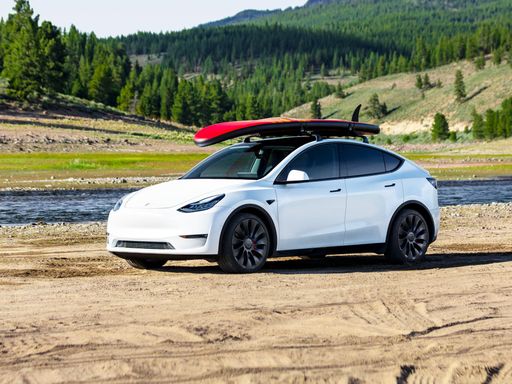 @ Tesla, Inc.
@ Tesla, Inc.
Tesla Model Y
Kia EV3
The Kia EV3 arrives as a cheeky, practical electric compact that manages to feel both premium and playful, delivering crisp handling and a roomy cabin that's perfect for urban life. With smart tech, friendly styling and sensible pricing, the EV3 is the kind of car that makes switching to electric feel like a no-brainer without asking you to give anything important up.
details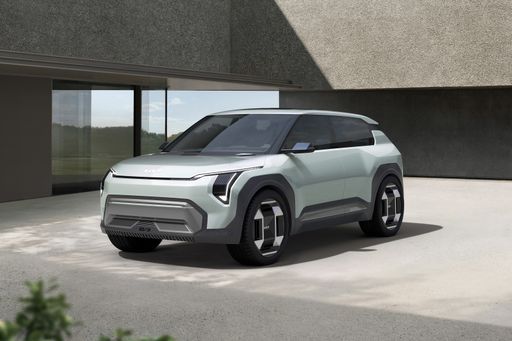 @ Kia Corporation
@ Kia Corporation
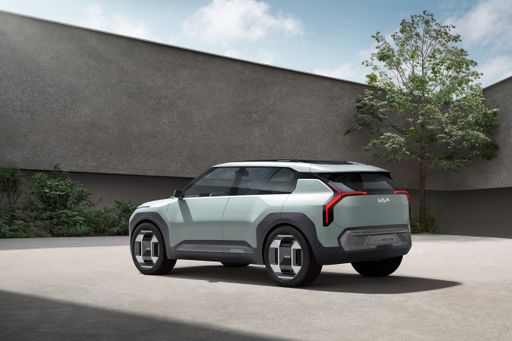 @ Kia Corporation
@ Kia Corporation
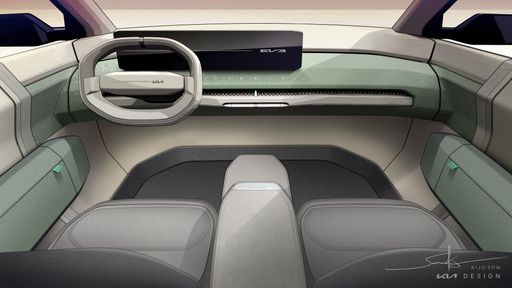 @ Kia Corporation
@ Kia Corporation
Tesla Model Y
The Tesla Model Y blends SUV practicality with sports-car poke, wrapping a roomy, minimalist cabin and handy hatch into a slick, aerodynamic package that feels more Silicon Valley gadget than garage ornament. It’s an ideal pick for buyers who want effortless electric driving, regular software improvements and access to Tesla’s convenient charging network, though style-conscious shoppers should know it’s more about tech and efficiency than classic luxury.
details @ Tesla, Inc.
@ Tesla, Inc.
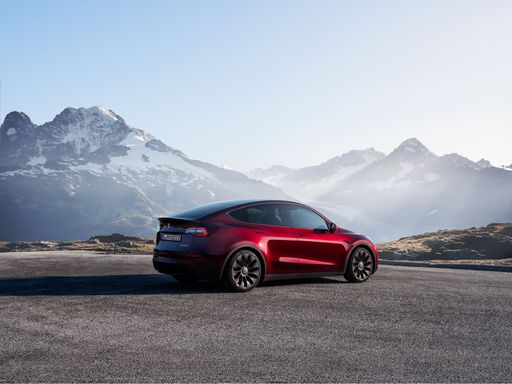 @ Tesla, Inc.
@ Tesla, Inc.
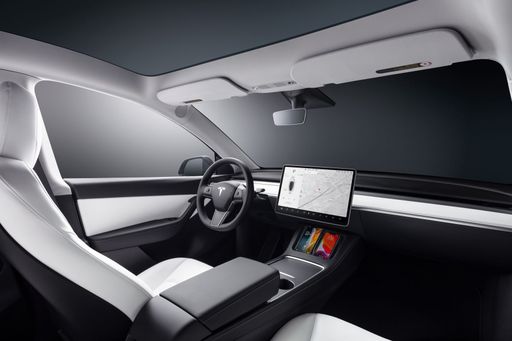 @ Tesla, Inc.
@ Tesla, Inc.
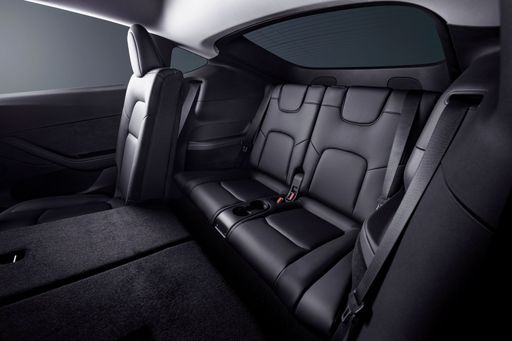 @ Tesla, Inc.
@ Tesla, Inc.
 @ Kia Corporation
@ Kia Corporation
|
 @ Tesla, Inc.
@ Tesla, Inc.
|
|
|
|
Costs and Consumption |
|
|---|---|
|
Price
30800 - 41700 £
|
Price
34300 - 53100 £
|
|
Consumption L/100km
-
|
Consumption L/100km
-
|
|
Consumption kWh/100km
14.9 - 16.2 kWh
|
Consumption kWh/100km
13.1 - 16.2 kWh
|
|
Electric Range
436 - 605 km
|
Electric Range
534 - 622 km
|
|
Battery Capacity
58.3 - 81.4 kWh
|
Battery Capacity
64.5 - 85 kWh
|
|
co2
0 g/km
|
co2
0 g/km
|
|
Fuel tank capacity
-
|
Fuel tank capacity
-
|
Dimensions and Body |
|
|---|---|
|
Body Type
SUV
|
Body Type
SUV
|
|
Seats
5
|
Seats
5
|
|
Doors
5
|
Doors
5
|
|
Curb weight
1800 - 1885 kg
|
Curb weight
1976 - 2108 kg
|
|
Trunk capacity
460 L
|
Trunk capacity
822 L
|
|
Length
4300 - 4310 mm
|
Length
4790 - 4797 mm
|
|
Width
1850 mm
|
Width
1921 mm
|
|
Height
1560 - 1570 mm
|
Height
1611 - 1624 mm
|
|
Max trunk capacity
1251 L
|
Max trunk capacity
2022 - 2138 L
|
|
Payload
470 kg
|
Payload
440 - 472 kg
|
Engine and Performance |
|
|---|---|
|
Engine Type
Electric
|
Engine Type
Electric
|
|
Transmission
Automatic
|
Transmission
Automatic
|
|
Transmission Detail
Reduction Gearbox
|
Transmission Detail
Reduction Gearbox
|
|
Drive Type
Front-Wheel Drive
|
Drive Type
All-Wheel Drive, Rear-Wheel Drive
|
|
Power HP
204 HP
|
Power HP
299 - 627 HP
|
|
Acceleration 0-100km/h
7.5 - 7.9 s
|
Acceleration 0-100km/h
3.5 - 7.2 s
|
|
Max Speed
170 km/h
|
Max Speed
201 - 250 km/h
|
|
Torque
283 Nm
|
Torque
420 - 493 Nm
|
|
Number of Cylinders
-
|
Number of Cylinders
-
|
|
Power kW
150 kW
|
Power kW
220 - 461 kW
|
|
Engine capacity
-
|
Engine capacity
-
|
General |
|
|---|---|
|
Model Year
2024
|
Model Year
2025
|
|
CO2 Efficiency Class
A
|
CO2 Efficiency Class
A
|
|
Brand
Kia
|
Brand
Tesla
|
What drive types are available for the Kia EV3?
The Kia EV3 is offered with Front-Wheel Drive.
The prices and data displayed are estimates based on German list prices and may vary by country. This information is not legally binding.
